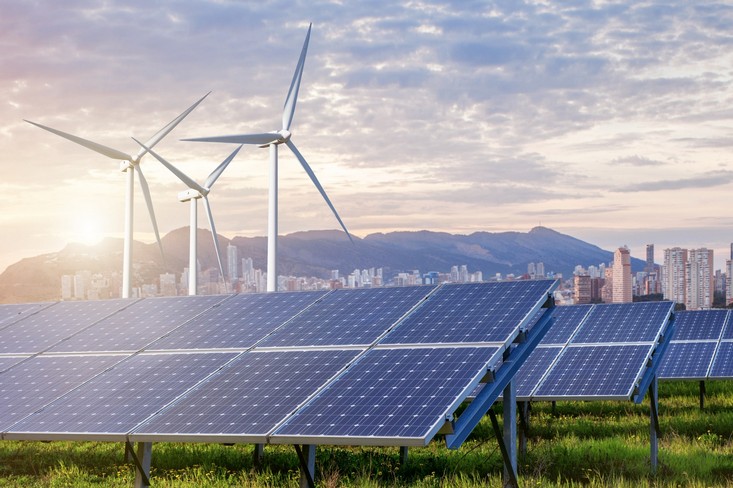Kategori : ELECTRICITY ENERGY NEWS, ENERGY AGENDA NEWS, SOLAR ENERGY NEWS, COAL NEWS, WIND ENERGY & RES NEWS - Tarih : 03 September 2020
China continues to lead the world in additions of new wind and PV capacity, even though in the past 18 months these installations have slowed. In 2018, China added a combined 66 GW of wind and solar
(20 GW of wind and a record 44 GW of solar PV), and this declined to 56 GW in 2019.
The winding-down of renewable energy feed-in tariffs (FITs) is the main factor. Rapid cost declines in
wind and solar PV had led to cycles of boom and bust in the sector, as policy-makers struggled to adjust
feed-in tariffs quickly enough to prevent overheating the market. Starting in 2018, the National
 Development and Reform Commission (NDRC), which sets prices, had signalled that wind and solar
Development and Reform Commission (NDRC), which sets prices, had signalled that wind and solar
feed-in tariffs would be phased out completely, in part to address growing deficits in the funds used to
pay for the subsidies. Such funds are derived from electricity surcharges, which the government is
unwilling to increase. In mid-2018, a sudden announcement that there would be no further quota for
solar FITs led to a sharp drop in solar installations, and that market has only partially recovered. For
2020, project approvals for any facilities that benefit from feed-in tariffs must be strictly controlled and
limited to the anticipated increase in surcharge funds, which rise in proportion to electricity demand
growth.
1
Continuing additions of coal-fired power capacity has also played a role. Although utilization rates at
China’s coal plants are low, and most lose money, planners and provincial officials continue to be
concerned about the potential for power shortages, and see coal as essential for reliability
Covid-19 has three main impacts on clean energy trends. First, lower electricity demand growth means
lower renewable energy surcharge collections, which in turn reduces the space for renewable subsidies,
which were already scaling off. The NEA has already reduced the total subsidy available for new PV
plants in 2020 from RMB 2.6 billion announced in November last year to RMB 1.5 billion in February.
10 Second, lower electricity demand growth also means less demand for coal. In the first three months of
2020, electricity from thermal sources (mainly coal) declined 8.4 per cent from the prior year, while total wind and solar output rose 7.6 per cent from the prior year.
11 Although to date we have not seen major changes or cancellations in coal plants resulting from lower output, nor has NEA revised its risk alert levels for new coal plant approvals, lower utilization of coal plants for a full year could ultimately lead to fewer approvals. But paradoxically, lower electricity demand may also mean that provinces further restrict new renewable additions, as provincial energy systems remain tied to inflexible coal power plants and have lower consumption capacity, at least under the present calculation methodology.
A third factor to consider is the economic stimulus, which may take green or brown forms. Prior to the
Covid-19 crisis, the government had already launched a New Infrastructure plan, which included highvoltage transmission and electric vehicle charging among its categories.
12 While there have been calls for additional stimulus, including green stimulus focused on clean energy, the present course of the government appears to focus on more modest pro-growth measures that reinforce trends and policies already underway. The annual Two Sessions of the National People’s Congress included measures to boost local lending, as well as efforts to increase employment and consumption. But thus far, major changes to traditional infrastructure spending (real estate, steel, cement) or clean energy appear unlikely.
The current government work plan calls for “stable growth” of renewable energy, and the policies
released so far in 2020 all support this paradigm.
The draft Energy Law13 clearly states that renewable energy will have priority for development. The
draft contains more mention of renewable energy in all its forms than any other fuel, and coal receives
little attention in the draft, both in terms of mentions (figure 3) and in terms of specific policy measures
(however, the law does mention that advanced coal technology should be developed). Many of the
provisions of the Energy Law draft relating to renewable energy represent codifications of policies—
such as on the renewable obligation—that already existed in policy form.
What are the obstacles to clean energy in China today?
The main obstacle to clean energy is that the contradiction between coal and renewables remains
unresolved. Coal is still perceived as a reliable, baseload fuel, and discussions of energy security in
China generally fail to mention the role of renewable energy. Renewables are also portrayed as
expensive, even as academic studies show wind and solar are now competitive with coal in much of
China and coal plants lose money.
The contradiction is not merely an ideological debate, but is reflected in administrative planning at all
levels. More provinces now have the green light for coal investment than for wind and solar. Recently,
the provinces of Henan, Hunan, and Shanxi released renewable consumption capacity plans that bar
new utility-scale solar additions—even though new coal plants are approved for these areas and wind
and solar made up less than 15 per cent of their electricity production in 2018. The provinces each
consume roughly the same amount of electricity as the U.K. or other large European countries—yet in
comparison to these, their wind and solar share is much smaller (figure 4). The limited flexibility of local
power plants is unlikely to fully explain the relatively small space for renewables calculated by planners.
The slow adoption of spot markets also presents a challenge. Yet, it remains unclear what market model
China will adopt, and whether it can fully enable full price competition and economic dispatch of
electricity sector assets at the provincial and regional levels. The design of power markets also
highlights contradictions between central and provincial authorities—with central officials placing a
higher priority on renewable energy and competition, whereas local officials often seek mechanisms
such as capacity markets that might provide a safety net for local coal assets.





